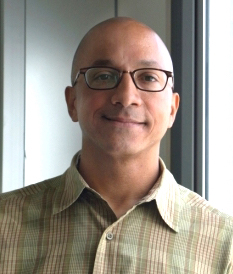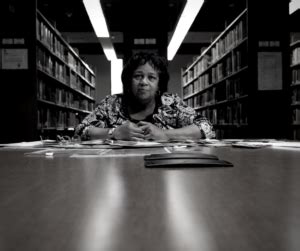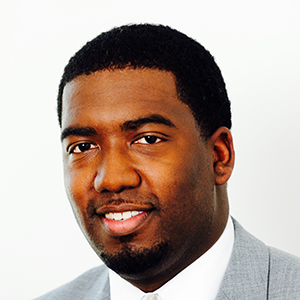Sociology Event Explores Intersection of Racial Justice and the Environment
By Gina Myers
November 10, 2021
For decades, studies have shown that Black, Indigenous, people of color (BIPOC) communities and low-income communities face greater environmental and climate threats, while contributing the least to these problems. However, the environmental justice movement has not always considered how these populations are disproportionately affected by environmental issues.
To call attention to environmental racism, the Department of Sociology kicked off a new series of social justice-themed events with a one-day symposium held on October 14. Titled “Ending Environmental Racism: Understanding Social Forces, Fighting Local Battles,” the event featured academic, activist and policymaker perspectives.
The event was organized by Assistant Professor of Sociology Amanda McMillan Lequieu, PhD, and Professor of Sociology Diane Sicotte, PhD, who are both environmental sociologists.
“The Department of Sociology is committed to social justice and decided to use funds from the Paul C. Griffiths Memorial Fund towards a series of colloquium talks on social justice that built on our faculty's courses and research interests and celebrated on-the-ground justice work being done locally,” said McMillan Lequieu. “We wanted to facilitate learning about not only the root causes of environmental racism, but about how, together, research and practice can resist and reimagine the uneven distribution of environmental harms.”
When it comes to environmental justice, it is important to keep the focus on environmental racism. Sicotte explained, “I wanted our students to get a different idea of what environmental racism was all about and understand the spectrum. But the most important thing that I wanted our students to understand is how structural racism in society creates the conditions for environmental racism and keeps it going.”
She added, “Ending environmental racism is definitely something that needs to be at the top of the agenda for all of the environmental endeavors that anybody would engage in.”
The featured speakers offered a variety of perspectives while each establishing how urgent the issue is.
Critical Environmental Justice & Incarceration
David Pellow, PhD, Dehlsen Chair and professor of environmental studies and director of the Global Environmental Justice Project at the University of California, Santa Barbara, opened the event with a talk titled “The Fight for Environmental, Climate, and Food Justice in Prisons, Jails, and Detention Centers.”
Pellow began by defining what environmental justice studies is, saying there are three questions that guide all of his teaching, research and activism: How are social inequality and environmental quality linked? How can social movements and grassroots forces lift up discourses and practices to shape environmental policy? And how can we improve people’s quality of life?
“That third [question] is really the main point here: How can we promote people’s quality of life and ecological sustainability? That’s really the heart of what I think so much of the good work that environmental justice studies does is about,” said Pellow.
 David Pellow, PhD
David Pellow, PhD
He went on to establish a theoretical framework for critical environmental justice, which includes considering multiple categories of difference, understanding the issues as multiscalar problems (problems that exist at micro and macro scales, as well as across temporal scales), questioning the fixation on state-based solutions only, and naming the logic of expendability as an underlying problem.
To push back against the idea that some people, animals and land are dispensable, Pellow said, “We need to embrace a logic of indispensability […] To change everything, we need everyone. We are all indispensable to creating a collective that is sustainable and equitable.”
One of Pellow’s projects expands the notion of critical environmental justice to incarcerated and enslaved people. “The environment isn't just the ocean, the forest and the trees,” he explained. “It's also where people live, where we work, where we play, where we learn, and where we pray—and guess what, we do all that in prisons and jails as well. And we also do time. So for me, we need to consider expanding that notion [of environmental justice] to the carceral space.”
The Prison Environmental Justice Project examines the relationship between carceral institutions and environmental justice across the globe. Pellow discussed numerous examples of how people who are incarcerated face environmental risks, from a prison in Pennsylvania that is located near a coal ash dump that is causing medical harm to those incarcerated there, to incarcerated people being the last to be evacuated in cases of environmental threats like hurricanes and fires.
Though Pellow shared examples of many crises facing us, he says it isn’t all doom and gloom. He also shared numerous instances of people using hunger and labor strikes to advance environmental justice and human rights in prison systems. “One of the most exciting fronts in the movement for environmental justice is actually occurring in prisons, jails, and detention centers where incarcerated persons themselves are leaders in the environmental justice movement,” he said.
“And if according to the 13th Amendment, prisons are sites of enslavement, well, what this means in some sense is that the prisoner-led environmental justice movement is also a rebellion of the enslaved, which means this branch of the environmental justice movement is really continuing the work of abolitionist movements from centuries ago.”
Pellow painted the issue as urgent, reframing environmental racism as an act of warfare. “There is no question that environmental racism involves a direct assault by states—that is, governments and government-supported organizations—on entire populations, resulting in massive harm to those communities and our ecosystems, just like warfare in other cases does. It is also designed not just to harm those communities, but to maintain the health of valued groups.
“And finally, of course, I think of environmental racism as a form of warfare because what we call environmental justice communities, those communities that are dealing with environmental racism, they actually become legitimate targets and enemies of the state. And that may sound a bit harsh, and it is, but I think it also reflects reality, and I use this framework to really underscore the seriousness of environmental racism, how we probably need a massive peace movement, along with an abolition movement.”
A Longstanding Community Battle
While Pellow cited numerous examples of environmental racism and environmental justice movements from across the United States and the globe, the second featured speaker brought the focus closer to home.
Zulene Mayfield, an environmental justice leader and activist who has been fighting environmental racism in nearby Chester, PA, since 1992, spoke about her work with the Chester Residents Concerned for Quality Living (CRCQL, pronounced “circle”). The group has been fighting against the nation’s largest trash incinerator (Covanta), a sewage waste treatment facility and sludge incinerator (DELCORA), chemical manufacturing plants and other polluting industries.
Chester is a small city south of Philadelphia in Delaware County, and it is a powerful example of environmental racism in the United States, with incinerators and other toxic facilities impacting the majority low-income Black and brown community and affecting their health and quality of life.
 Zulene Mayfield
Zulene Mayfield
“Delaware County is currently the fifth most affluent county in Pennsylvania, and Chester is one of the poorest cities in Pennsylvania,” explained Mayfield. “Currently, we suffer from all types of health issues on top of COVID. Prior to COVID, about 38% of our children suffer from asthma, as well as other members of the community. There's a high cancer rate and morbidity rate. We have a high incidence of low birth weight babies in the community. So it is a community that is suffering from poor health and then you add to it a hazard like an incinerator.”
In addition to health issues, the incinerator has also negatively transformed the quality of life in the community. The nearest house is just 53 feet from the incinerator’s fence. Mayfield did her first neighborhood survey in 1993, two years after the Covanta incinerator began operations, and found that there was an 83% home ownership rate in the six blocks by the incinerator. Now, only 37% of the people in that area own their homes.
“It has decreased our property value. If you have a home in that area, you can't do anything with it—you can’t sell it. Nobody wants to rent from you,” said Mayfield. Because it is unsafe to live there, people wind up abandoning their homes.
While the community is bearing the brunt of the incinerator, they also do not generate much of the trash that winds up there. “[The incinerator] burns about 3,500 tons of trash per day, 24 hours a day, 7 days a week. Most of the waste that goes into the incinerator is split between Philadelphia and New York,” said Mayfield. All of Delaware County’s trash also goes there, and Chester is one of 49 municipalities that make up the county, but Mayfield noted that the trash generated in Chester contributes 1.8% of the capacity that has gone into the incinerator. “So clearly it's an issue of inequity, racism and unfairness,” Mayfield said.
“These types of undesirable companies always come into poor areas under the guise of 'we’re bringing economic development and much needed jobs,'” said Mayfield. “Currently the incinerator, even though it's the largest in the country, only employs 105 people. Six of those people are Chester residents. That's it—six, six people in the community.”
The residents of Chester have historically not had a voice in the decisions that are being made about the community. “In Delaware County, they have something called the Delaware County Solid Waste Authority. Never in the history of this authority or in Delaware County has anybody from Chester sat on any of these boards making decisions about our community,” explained Mayfield. “We have put forth some nominations, and one of those nominations was just appointed to the board. So we're working in the system and outside of the system.”
The Covanta is currently up for permit renewal, and Mayfield is hopeful for public pressure. Because of CRCQL’s work, more people are aware of where their trash is going and what devastating effects it is having on the surrounding community.
“In the last year, we've been concentrating on making the county more responsible for what they put out on a curb and have an acknowledgement of where their trash is going. We have been successful in having five of the communities pass zero waste resolutions. They're saying that they no longer want to participate in environmental racism and they do not want their trash coming to Chester to be burned.”
“In the last year, we've been concentrating on making the county more responsible for what they put out on a curb and have an acknowledgement of where their trash is going. We have been successful in having five of the communities pass zero waste resolutions. They're saying that they no longer want to participate in environmental racism and they do not want their trash coming to Chester to be burned.”
Mayfield concluded her talk by sharing a number of ways students could get involved, whether it is volunteering with CRCQL or forming a chapter of the student organization Campus Coalition Concerning Chester at Drexel University. She also said that many career paths can contribute to ending environmental racism, from scientists and engineers to urban planners and filmmakers. “Whatever you decide to do, just give it your heart,” encouraged Mayfield.
Environmental Racism in Philadelphia
The final speaker of the day, Saleem Chapman, chief resilience officer in the City of Philadelphia’s Office of Sustainability, opened by noting, “It is fitting that as a government representative, I would be presenting last because it wouldn't be an earth-shattering revelation for me to say the government has been late to the discussion of environmental injustice.”
In her introduction, Sicotte explained that Chapman is the first person to serve as chief resilience officer, which shows the city is now paying attention to environmental issues. He oversees the city’s preparedness for the unprecedented challenges of the climate crisis and to ensure progress toward the Kenney administration’s goal of a more resilient and equitable city.
Chapman discussed how the last 18 months have made clear that the climate crisis has arrived, as demonstrated through record-breaking temperatures and destructive storms. In order to meet the climate challenges of our time, he said, “We need to reach the long, tougher dream of racial justice.”
 Saleem Chapman
Saleem Chapman
“The root causes of climate vulnerability are three things: race, class and place. As advocates, we often talk about social justice, political justice, environmental justice, climate justice and more as though there are separate issues. But these dimensions of injustice are connected to a complex web of oppression,” he explained. “The fact is inequities overlap and amplify one another, and those bearing the brunt of climate change often have the fewest resources, the most constraints on our civil rights and live in the most polluted places.”
The three major changes to climate that Chapman says Philadelphia can expect to see is more extreme heat, more frequent and intense storms, and surge water levels as a result of sea level rise. “While the acute disruptions that these impacts bring are of considerable concern, it is in many ways the sustained effects that they will exert on race, socioeconomic status and health, that are cause for greatest alarm because climate disruptions will compound broader social economic trends that are already happening,” he said.
The experience of the climate crisis will be dramatically different based on what part of the city one lives in because decades of discriminatory and inequitable developments have led to disproportionate vulnerability.
In addition to disproportionate vulnerability and exposure, there is also a disparity in adaptive capacity—that is, the ability to cope with the consequences of climate change. Chapman drew on examples from Philadelphia’s Eastwick community as well as examples from New Orleans, specifically noting how the same communities that were affected during Hurricane Katrina were also affected by Hurricane Ida.
Chapman said, “What happens after an acute crisis plays a pivotal role in what happens during the next crisis. We simply cannot afford to build back as is without changing the underlying systems that contribute to repeated disaster.” He says it is necessary not to just restore a community to its pre-disruption quality of life, but to also elevate overall levels of community well-being.
Recovery programs often increase disparity, with who is prioritized mirroring the predominance of structural racism in our society. Numerous studies have shown that in the aftermath of disasters—whether natural or financial, such as with the Great Recession—white families generally see their wealth increase, while Black families see theirs decrease.
“The groundwork for driving climate resilience really lies in righting historical injustices,” said Chapman. The Office of Sustainability is focusing its efforts on place-based initiatives, activating leadership in frontline communities. “[We must understand] that it is only them who can steer us towards solutions that reflect how their communities experience discrimination and climate risks—which is cumulatively and not as isolated, acute events.”
Chapman’s presentation ended with a note of worry that the problems of the past are repeating themselves. “We’re already seeing indications that banks and mortgage lenders are beginning to draw arbitrary lending boundaries around areas perceived to be at risk for flooding, in a practice that's becoming known as bluelining. So many of the neighborhoods that banks are bluelining now are the same ones that were hit by the racist redlining practices in the days past.”
Informative and Inspiring
Approximately 100 people were in attendance via Zoom in addition to 40 undergraduate students from Sicotte’s Environmental Justice class and McMillan Lequieu’s Qualitative Methods course. While putting a spotlight on an urgent issue, the event also stirred emotions and inspired audience members who engaged with the speakers during question and answer sessions and sought ways to get involved.
“I loved seeing my Qualitative Methods students' engagement with the speakers—cheering on Zulene Mayfield's amazing work in Chester and asking questions of Saleem Chapman about his work in the City of Philadelphia,” said McMillan Lequieu. “David Pellow's vision for a future where we, as humanity, truly care for the bodies and landscapes where society's most marginalized live—people who are incarcerated—moved so many in the audience as well.
“We hoped our students would not only learn more about the history of environmental injustice, but have their imaginations stretched as they considered possible solutions. Each of the speakers talked about possible careers students could pursue to help in the fight to make all landscapes, houses and communities safe for all people. And every speaker emphasized that students' values—the passion for justice, for redressing institutionalized wrongs, for activism—should drive their career goals.”
The event was sponsored by the Paul C. Griffiths Memorial Fund. The next event in the Department of Sociology’s social justice series will take place during spring term. Stay tuned to the College of Arts and Sciences' events calendar.